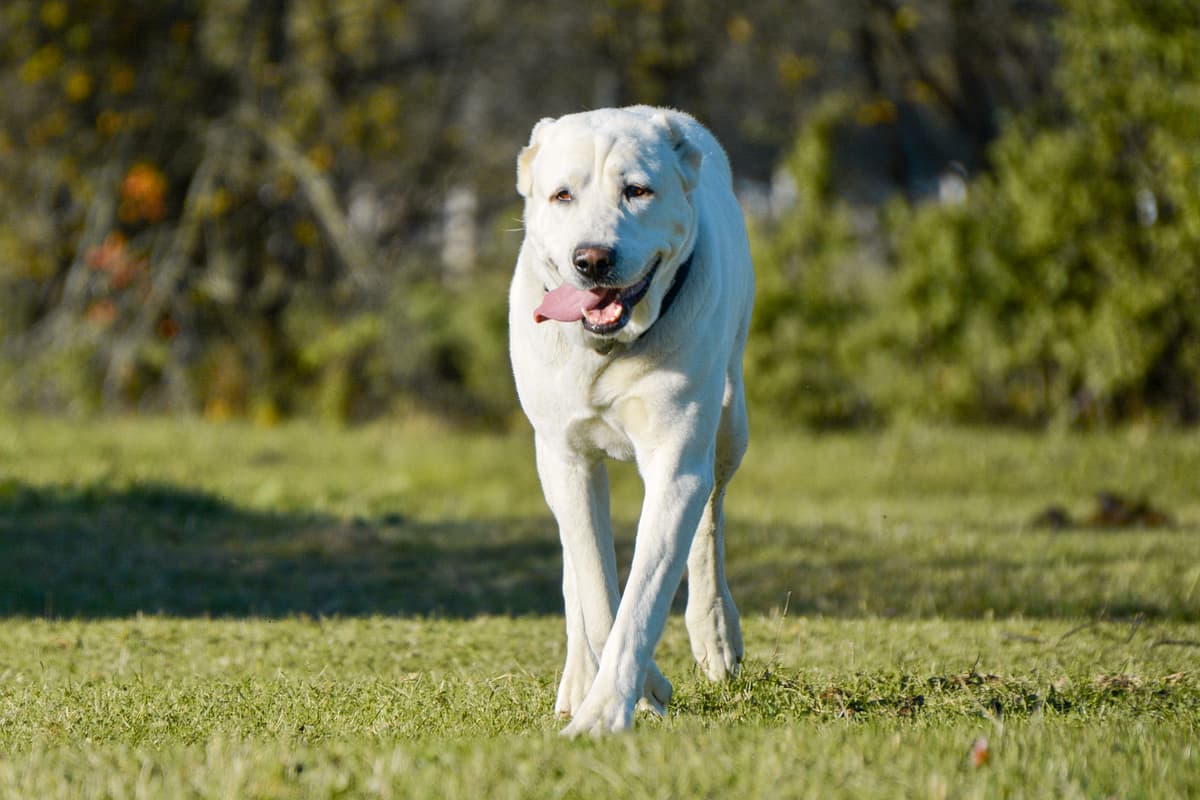Central Asian Shepherd vs Labrador Retriever
Discover the differences between Central Asian Shepherd and Labrador Retriever to make the best choice for your situation.
Try different breeds

Central Asian Shepherd
Powerful, confident, and fiercely loyal, this breed excels as a natural guardian and steadfast family protector. Calm at home yet fearless when needed, it thrives with purpose.

Labrador Retriever
Eager, friendly, and intelligent, this breed loves being part of an active family. Their gentle nature and loyalty make them outstanding companions for all ages.
Quick comparison
Large
50–79 kg
Dense double coat, straight
12–15 years
40–65 kg
Moderately active
Large
29–36 kg
Short double coat, water-resistant
10–12 years
25–32 kg
High energy
Personality & behavior
Compare the personality traits and behavioral characteristics of both breeds.
Central Asian Shepherd
Reserved with strangers, loyal to family members
Quick learner, responds well to training
Moderate activity, enjoys regular but not intense exercise
Not highly playful, prefers purposeful activity
Can adjust to new environments with guidance
Labrador Retriever
Warm and sociable with people and animals
Quick learner, responds well to training
High stamina, enjoys active pursuits daily
Loves games and interactive activities
Adjusts easily to new situations and environments
Care needs
Exercise, grooming, and daily care requirements
Central Asian Shepherd
Hip dysplasia, elbow dysplasia
Labrador Retriever
Hip dysplasia, elbow dysplasia
Suitability
How well each breed fits different living situations and families
Central Asian Shepherd
Challenging for beginners
Requires experienced handling and training due to independence and size
Not apartment-suited
Needs ample space and outdoor access to be comfortable
Moderately suitable
Enjoys activity but prefers purposeful work over constant play
Watchful but wary
Protective instincts may be too strong for homes with small children
Cautious introduction needed
May show dominance or territorial behavior with other animals
Poor fit
Dislikes isolation and may develop behavioral issues if left alone often
Labrador Retriever
Great choice
Patient and eager to please, Labradors are manageable for most first-time owners.
Not ideal
Labradors need space and exercise, so apartments can limit their activity needs.
Perfect fit
High energy and stamina make them excellent for active individuals or families.
Highly suitable
Gentle temperament and playful nature make them safe and loving with young children.
Very friendly
Generally sociable and get along well with other dogs and pets.
Prone to anxiety
Extended alone time can lead to boredom and destructive behaviors in this breed.
Breed strengths
What each breed excels at and their best qualities
Central Asian Shepherd
- Protective instincts make excellent livestock guardians
- Highly resilient to harsh weather conditions
- Loyal and devoted to their families
- Low grooming needs due to dense coat
- Independent problem-solving abilities
Labrador Retriever
- Friendly and sociable with people and dogs
- Highly trainable and eager to please
- Excellent with children and families
- Strong retrieving and swimming abilities
- Generally adaptable to various living situations
Challenges & considerations
Potential challenges and considerations for each breed
Central Asian Shepherd
- Can be wary or aloof with strangers
- Requires experienced handler for training
- Strong territorial and protective drive
- Needs substantial space and secure fencing
- May show aggression toward unfamiliar dogs
Labrador Retriever
- Prone to obesity without portion control
- Can become destructive if under-exercised
- Heavy seasonal shedding requires regular grooming
- May develop hip or elbow dysplasia
- Needs significant daily physical activity
Ready to choose your perfect breed?
Learn more about each breed or compare other breeds to find the perfect match for your lifestyle.
Discover more helpful tools
Make use of our other free tools to get the most out of your pet experience
